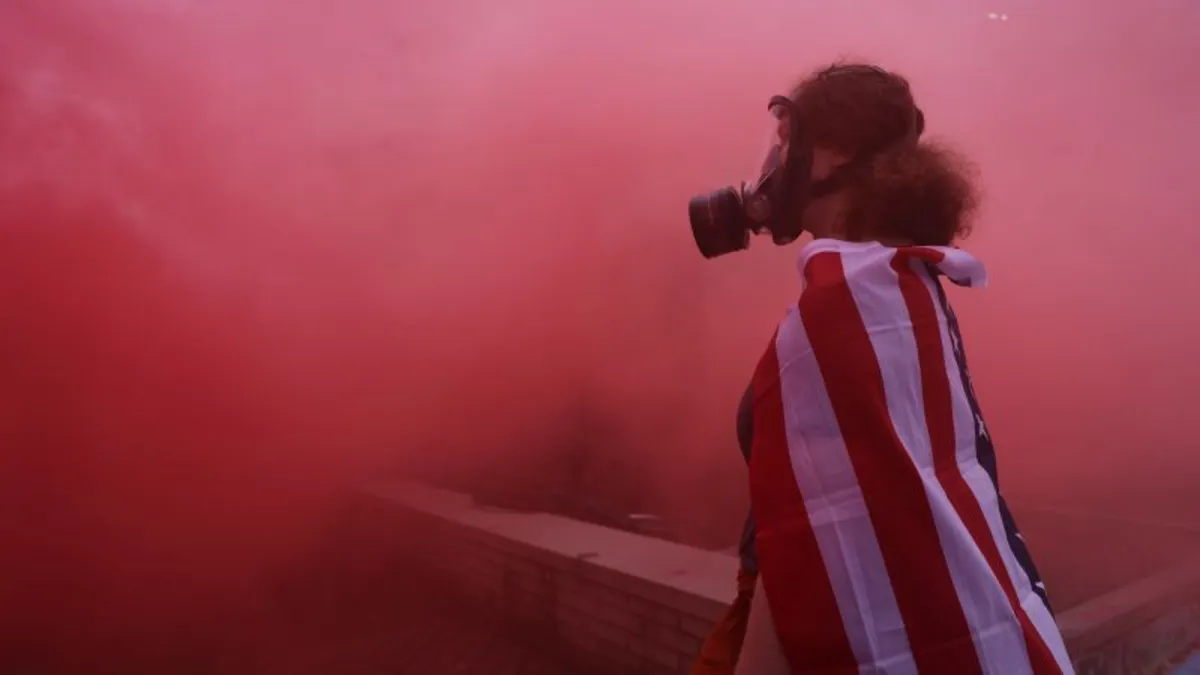
The ongoing battle between the Trump administration and Democrat-led cities escalated dramatically this weekend. A federal judge in Oregon issued a temporary pause on President Trump’s plan to deploy federal troops in Portland. Meanwhile, the White House announced the authorization for hundreds of National Guard members to be dispatched to Chicago. These developments unfolded amidst persistent protests in both cities against federal law enforcement actions aimed at enforcing President Trump’s expansive immigration enforcement agenda.
Trump and his administration have characterized the demonstrations in Portland and Chicago as “violent protests” orchestrated by “domestic terrorists.” They argue that military deployments are essential for protecting federal immigration personnel and property. However, state and city leaders contend that the protests have remained largely peaceful, with any instances of violence effectively managed by local law enforcement.
Tensions reached a peak in Chicago on Saturday after U.S. Customs and Border Protection agents fired “defensive shots” at a woman who allegedly rammed her car into a federal law enforcement vehicle. The Department of Homeland Security (DHS) confirmed that the woman is now in FBI custody after being treated at a hospital. However, it remains unclear whether any charges have been filed against her.
District Judge Karin Immergut granted a temporary restraining order on Saturday, preventing Trump from sending National Guard troops to Portland. Immergut ruled that city and Oregon officials are “likely to succeed” in proving that the President exceeded his constitutional authority and violated the Tenth Amendment with the deployment order. The judge, appointed by Trump, stated that the President appeared to have federalized the Oregon National Guard without proper constitutional authority, asserting that the protests in Portland “did not pose a ‘danger of a rebellion.’”
Immergut noted that Oregon attorneys presented “substantial evidence” indicating that the protests at the ICE facility in Portland were not significantly violent leading up to the President’s directive. Following the ruling, the Trump administration swiftly announced its intent to appeal to the Ninth Circuit Court of Appeals. The judge acknowledged that while recent incidents of protesters clashing with federal officers were “inexcusable,” they did not warrant military intervention, as they could be effectively managed by local law enforcement.
Approximately 200 National Guard troops were undergoing training in preparation for a potential deployment to Portland prior to the ruling. The new court decision temporarily places the National Guard back under the control of Governor Tina Kotek, according to Oregon Attorney General Dan Rayfield. The restraining order is set to expire in 14 days, but the state plans to request an extension.
As state leaders celebrated this legal victory, crowds of protesters continued to gather late into Saturday night outside an ICE facility in South Portland. Demonstrators both supporting and opposing the National Guard deployment rallied outside the facility, with reports from CNN affiliate KATU indicating that federal agents used multiple rounds of pepper balls, flash bangs, and tear gas to disperse crowds. Portland police stated that they did not witness any crimes during the demonstration and made no arrests, referring questions about the use of munitions to federal authorities.
In Chicago, tensions heightened when the White House announced that President Trump had authorized 300 members of the Illinois National Guard to “protect federal officers and assets.” This decision is part of a promise Trump made several weeks ago. White House spokesperson Abigail Jackson emphasized that the President will not ignore the “lawlessness plaguing American cities,” particularly amid ongoing protests.
Hours before this announcement, Illinois Governor JB Pritzker disclosed that he received an “ultimatum” from the Trump administration’s Department of War, demanding that he call up the National Guard or face federal action. Pritzker expressed that it is “absolutely outrageous and un-American” for the federal government to compel a governor to deploy military troops within their own state against their will.
Earlier that day, anti-ICE protests in Chicago escalated following reports that Customs and Border Protection agents shot at a woman who allegedly rammed her vehicle into a law enforcement car. According to DHS Assistant Secretary Tricia McLaughlin, the situation involved multiple vehicles surrounding officers, leading to the “defensive shots” being fired. The woman, later identified as Marimar Martinez, was taken into custody after seeking medical attention for her injuries. She was previously noted in an intelligence bulletin for doxxing agents online.
Another individual, Anthony Ian Santos Ruiz, was reportedly involved in the vehicle ramming and is currently in law enforcement custody. The nature of charges against Martinez and Ruiz remains unclear. Law enforcement also deployed gas canisters against protesters during the disturbances, with footage showing chaos as protesters attempted to shield themselves.
As the situation continues to unfold, both Portland and Chicago remain focal points in the ongoing conflict between state leaders and the federal government, raising significant questions about law enforcement practices, civil rights, and the role of the National Guard in domestic issues.